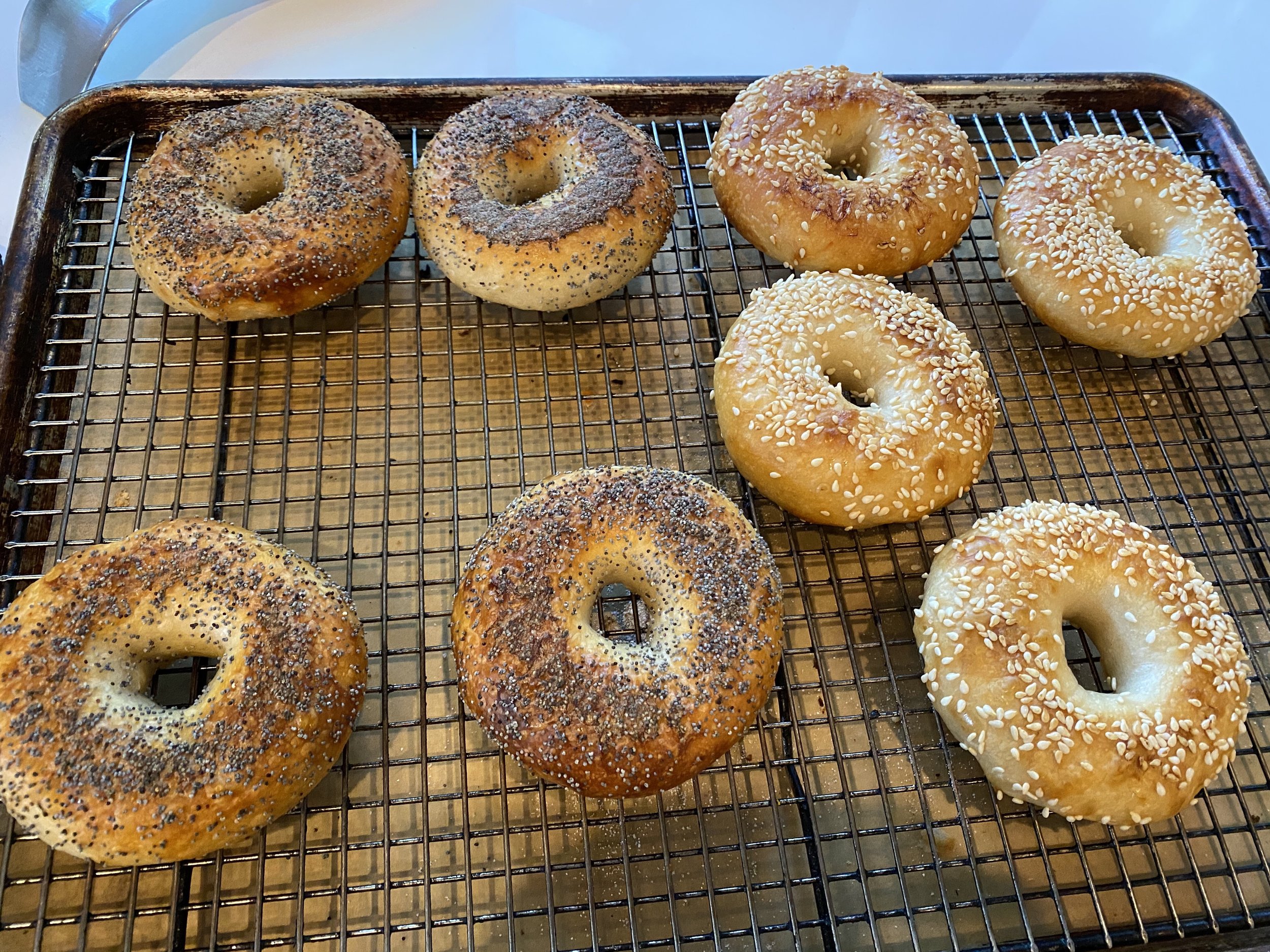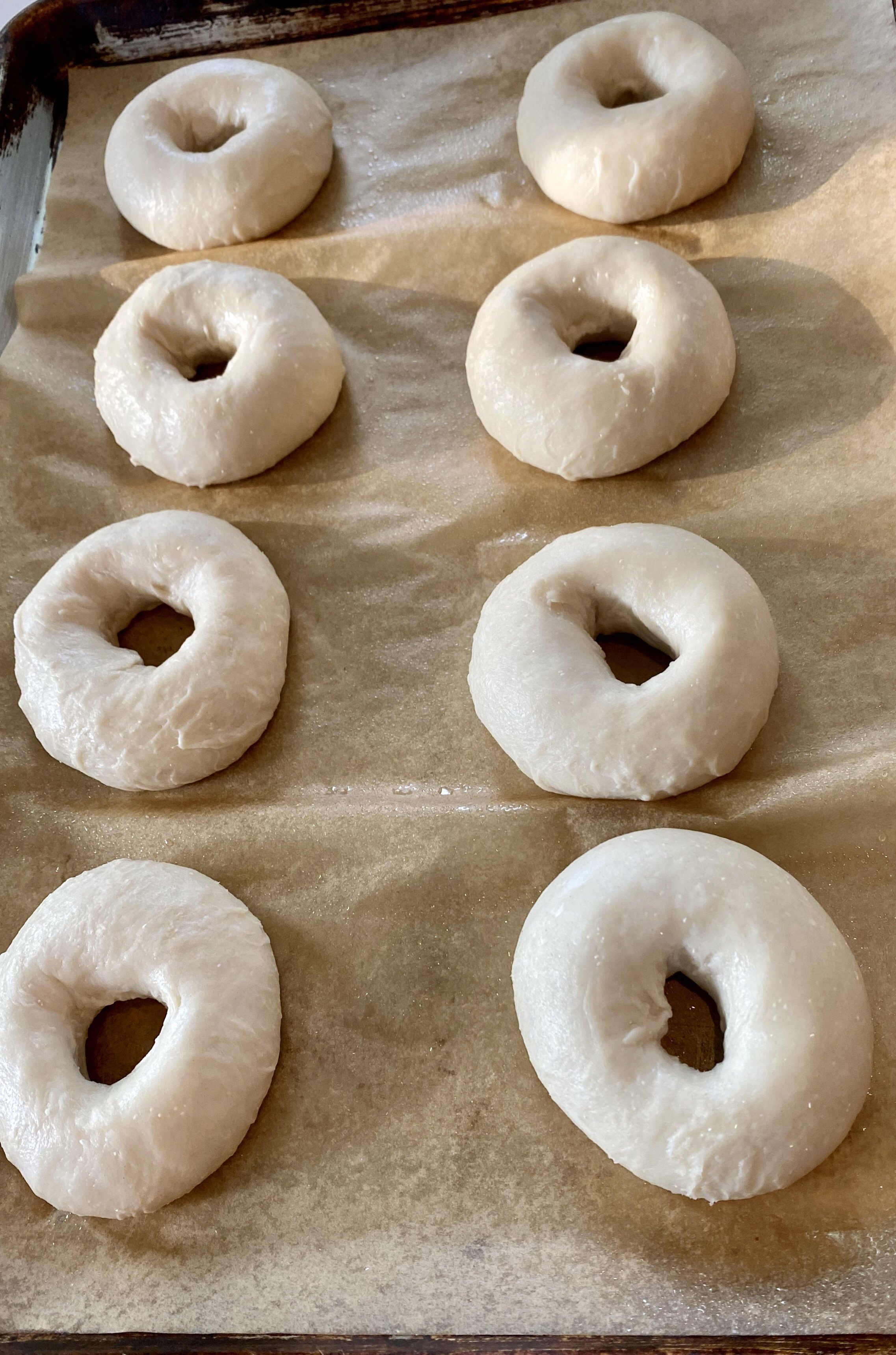Falling Flat: Sourdough Bagels
After years of trying different bagel recipies, Stella Parks’ bagels from Serious Eats proved to be the best of the bunch. It produced reliably flavorful bagels with a crisp crust and chewy texture. I modified the recipe by simplifying the yukone step, switching to high-gluten flour, and adding a sourdough starter discard for some more flavor. As I’ve maintained an active starter at room temperature, I’ve wondered about using this for leavening my bagels.
Realizing that a home starter will leaven more slowly than commercial yeast, I took a few precautions for my first experiment. My base recipe was identical to the original, but omitted the yeast. I stacked the deck by letting the shaped bagels sit for an additional 15 minutes prior to refrigerating, and left the bagels in the refrigerator for 36 hours rather than the customary 24. As my pot of malt-syrup infused water boiled vigorously, I ready myself for preparing the best bagels I had every tasted. Instead, I was left feeling very similar to what my bagels must have felt as the sank in the water instead of happily floating, a sure sign that the leavening had gone poorly. With some coaxing, they eventually rose, but they looked like I felt: deflated.
I baked them anyway. The most generous term I could use would be “acceptable”. They were still better than many commercial bagels, and the flavor was robust and unique. However, they were far denser than they should have been.

I continued making efforts over the subsequent days, trying various techniques to improve the results: I added longer room temperature proofs, including up to 12 hours, and even did a controlled experiment, with half the batch at room temperature for 12 hours followed by 12 hours in the refrigerator, and half the other way around (a classic switch study). Bottom line: they were no different. Both rose somewhat, but failed to float on the initial drop into the water bath. I was left with the same textural problems.

Other failed attempts included adding extra starter discard from my refrigerated stock, leaving out the yukone altogether, and other (ahem) half-baked ideas.
Eventually, I broke down and asked myself why I was trying to be such a purist. After all, I was well stocked with commercial yeast, and the sourdough police have no jurisdiction over my kitchen. I pulled the trigger on a hybrid: I used my original sourdough-enhanced bagel recipe, but replaced the leftover starter with fresh, active starter, and cut the commercial yeast quantity in half.

The difference was undeniable. Right out of the fridge, the bagels were plumper, had better structure, and looked like they were ready to fulfill their destiny. They immediately floated buoyantly in the water bath, and maintained a robust shape as they baked perfection in the oven. The sourdough added a depth of flavor, while the commercial yeast ensured they didn’t fall flat. I suspect I can cut the commercial yeast further, but that is for another day.
